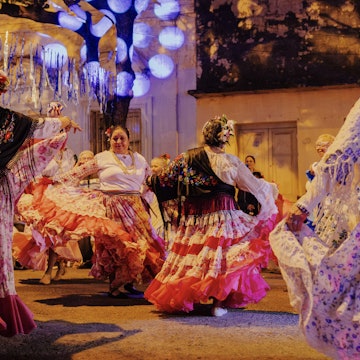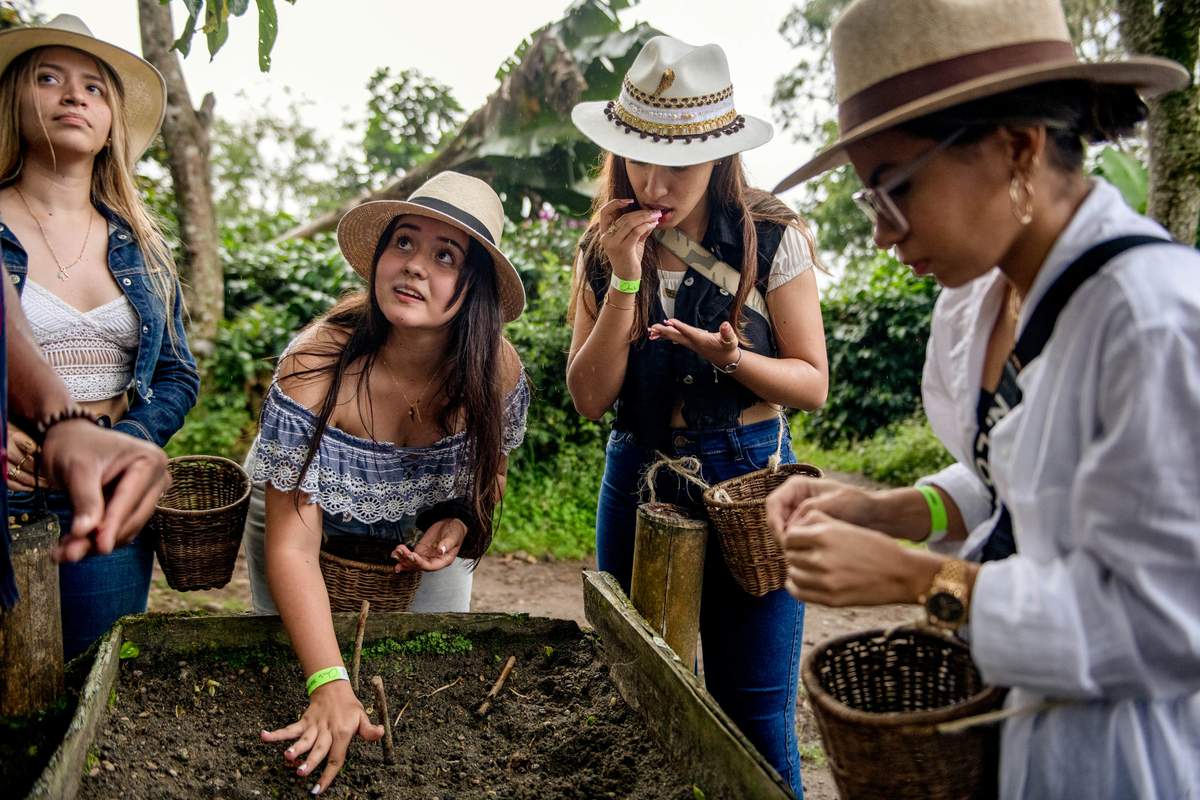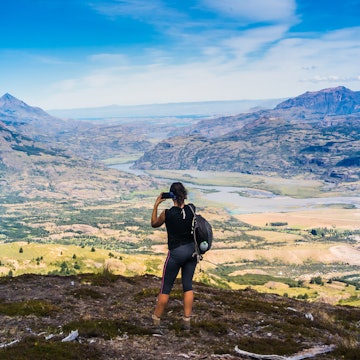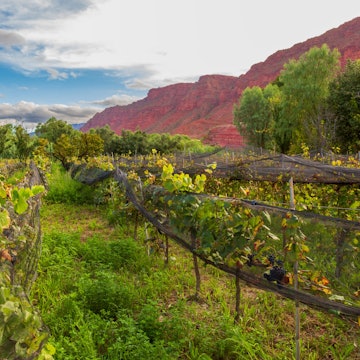
Exploring Punta Gallinas, Colombia's untouched Caribbean desert
Mar 10, 2020 • 5 min read

Hammocks on a beach at sunset. DC_Colombia / Getty Images
An arduous two-day journey into the desert of La Guajira will take you deep into the unknown, into the remote territory that characterizes Colombia’s remote northern coastline. Silent stretches of sand extend for miles and miles until they spill out onto the Caribbean coastline, eventually carrying you all the way to Punta Gallinas, the northernmost tip of South America.
Roll down sand dunes and into the waves at secluded Caribbean beaches before enjoying magical sunsets that eventually turn into evening performances of light under star-drenched skies. Getting to Punta Gallinas isn't easy, but it’s well worth the trip.
La Guajira & Wayúu culture
La Guajira is one of Colombia’s 32 very diverse departments and is known for its giant sand dunes, tiny remote fishing villages and the Wayúu indigenous people who live there. Modern media often associates the Wayúu with the colorful woven bags they produce.
These bags are not only a part of the local tradition here but also an expression of life itself, and they’re one of the only ways in which locals can earn a living aside from breeding livestock.
Read more: The Wayúu: Colombia’s most famous weavers
Because it is so remote, you won’t find any local shops where you can purchase food or water. You’ll find a few locals selling water and other drinks at some of the most visited stops, but it’s best to stock up on water before you head out into the desert. With an average daily temperature of 91ºF (32.7ºC) and a UV index of 6, it’s easy to get dehydrated fast here.

How to get to Punta Gallinas
To get to Punta Gallinas, you’re going to have to start your journey in Riohacha. Getting to Riohacha is easy by bus if you leave from large coastal cities such as Santa Marta, Cartagena or Barranquilla. Once there, you’ll find that you have two options: you can either make your way to the tiny town of Uribía by bus alone and hire a guide from there; or you can hire a guide in Riohacha. The latter is much easier, and it’ll cost you about the same.
Once you arrive in Riohacha, you’ll notice a lot of individual tour companies along the sidewalks offering tours in a 4WD to Cabo de la Vela, Punta Gallinas, or both. There’s only really a day’s difference between the two and, since you’re already there, it's definitely worth making the trek all the way to Punta Gallinas.
While suitable for solo travelers, you might find that it works out more cost-effective if you travel with friends. If you’re traveling with a small group of people, you can expect to pay around COP$300,000 (US$100) each for the roundtrip journey from Riohacha to Punta Gallinas. This includes meals as well as two nights’ accommodation in a hammock.
Day one: arriving in Cabo de La Vela
From Riohacha you’ll set out towards Cabo de la Vela, and experience adrenaline-pumping moments of racing through the desert sand in search of cooling, crashing waves at Playa del Pilon and Ojo de Agua. These are the two most iconic beaches in Cabo de la Vela, where orange-hued sand gets carried away and into the sea by the high winds. Pass the iguanas and dive in with the seagulls as you wash off your first day of exploring.
Read more: Why Colombia is your next destination for adventure
After a quick dip in the Caribbean waters, hike up to the sacred hill of Pilon de Azucar. You’ll be rewarded with 360-degree views of sand and sea, along with a unique look at the statue erected here of La Virgen de Fátima. Stay for sunset, where things turn cinematic as soon as the sun begins to dip below the horizon.
After a fun-filled day of more than one salty sea bath, you’ll head to your accommodation, which is likely a makeshift shack with hammocks strung across the ceiling. Enjoy dinner and then let the sound of nothingness lull you asleep under the warm breeze and a fantastic display of stars.

Day two: exploring Punta Gallinas
Dawn awakens adventurers early in Cabo de la Vela. Pack up the hammock, eat a light breakfast and then prepare to load up the 4WD for another day of desert driving.
The entryway to Punta Gallinas is Bahía Hondita, a tiny bay known for its burnt-orange cliffs, desert fauna and sweeping views of the Caribbean Sea. Speed out on a tiny boat in order to get up close and personal with wild flamingos, or stick close to the shore and roll down sand dunes.
At up to 60m high, the Taroa Dunes tower over the rest of the landscape. Currently, flying a drone in Colombia is legal, and if you’re after some stunning shots of sand and sea, this is the place to get them.
Then, head straight for the lighthouse, which is the symbolic point of the northernmost tip of South America. It’s the perfect spot for a photo op to commemorate your journey.
Seeing as there’s not much else to do once you’ve made it this far, you’ll be left to enjoy a sunset that’s likely just as magical as the adventure you’ve just been on. Settle in with a Polar or Aguila, both local beers, and watch as the Colombian sky paints a picture you’ll never forget. Snap a few photos, delight in the moment, and then retire to your hammock for a second night under a star-splashed sky.
The next morning, you’ll spend the entire day racing through the bumpy desert as you make your way back to Riohacha. It’s the perfect way to end a unique adventure, which is as much about the journey as the destination. Wrap a bandana around your face, stick your head out the window and let the wind help carry you on to your next Colombian adventure.















